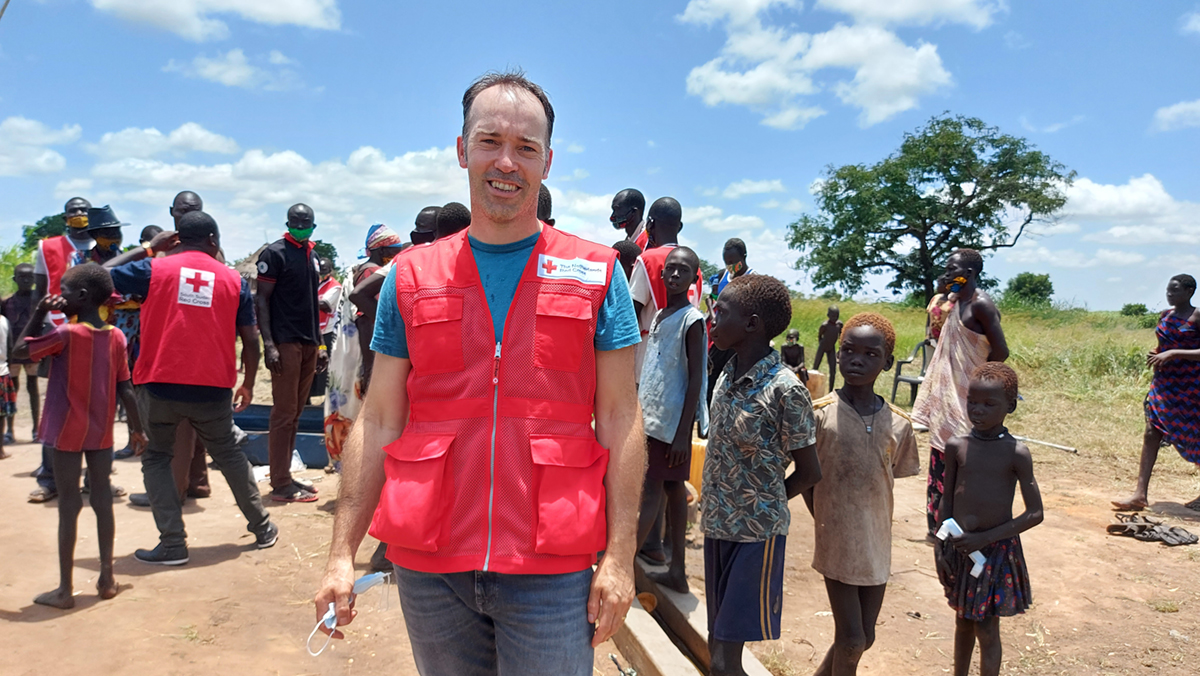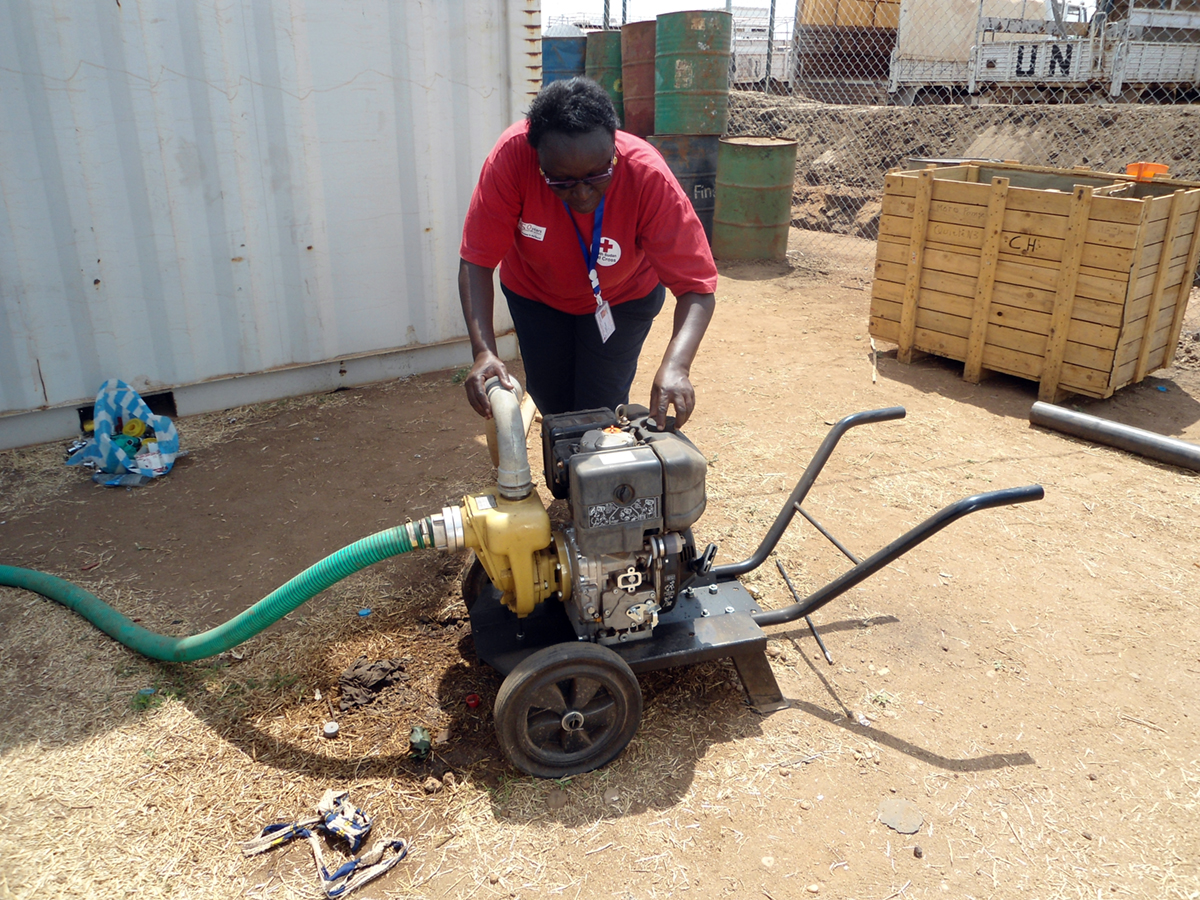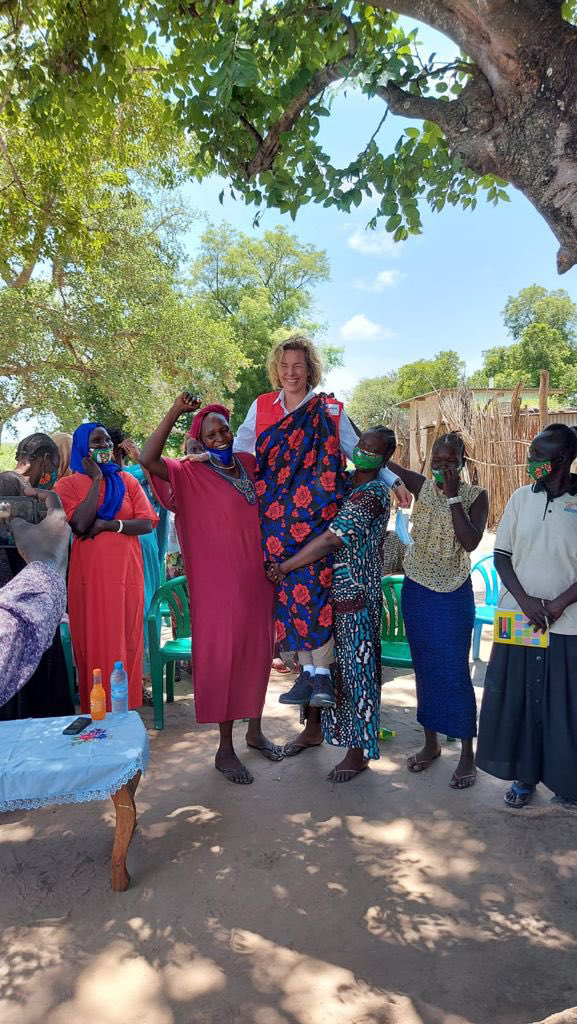COLLABORATION PAYS IN SOUTH SUDAN
Bright spots in one of the most dangerous countries in the world
Read articleTHREE YOUNG RED CROSSERS FROM THE HAGUE TO HAITI
Working together after an earthquake
Read articleReading time 10 minutes
COLLABORATION PAYS IN SOUTH SUDAN
Bright spots in one of the most dangerous countries in the world
The famous African smile, warmth and generosity. You find it all in South Sudan. What you also find? Hunger, conflict, drought and floods. However, Regional programme coordinator Meindert Korevaar also sees some bright spots. “A lot of knowledge has been lost due to warfare, but there are still talented people.”

South Sudan is one of the most dangerous places for aid workers to work. The country became independent in 2011, after nearly 40 years of war with Sudan. This was also when South Sudan acquired its own Red Cross association. However, the peace treaty signed with Sudan did not mean the end of domestic conflicts. In the capital city Juba, the street scene is dominated by soldiers and a strict evening curfew is in place. Outside the city there live nomads, who roam around with a stick in one hand and a kalashnikov in the other. They will shoot to protect their cattle and grassland and to keep rival tribes at bay. People are attacked because of their race and culture, and women are raped on a large scale. And then of course, there are the disasters which just never seem to leave the country alone: drought, floods, famine and the coronavirus.
Shortage of everything
“There are certainly many elements which make this country dangerous,” says Meindert Korevaar, who visited the South Sudanese Red Cross last autumn, together with director Marieke van Schaik. “More than 40 years of warfare and conflicts have left deep scars behind them. The country is in a chronic state of emergency, chronic crisis in aid terminology. There is a shortage of absolutely everything: healthcare, food, knowledge. Whole generations have had no education because of the war. It is estimated that 8 million people out of the population of 11 million are in need. That is depressing.”
However, if Meindert compares the current situation with how it was at the time of his last visit in 2012, he can see solid improvements. “Progress is slow, but you can see positive changes. For example, every town now has the internet and telephone. I also saw that there is a stretch of asphalt road between the capital Juba and the Terekeka region, 75 kilometres away. The asphalt road is still only 40 kilometres long, but 7 years ago there was absolutely nothing. People can travel to the capital much faster now and that sets trade in motion.”

Water wells and toilets
Terekeka is also the place where the Red Cross set up a project in 2016 to make 40,000 residents more resilient. This region is ravaged by floods, droughts and conflicts that flare up. The Dutch Red Cross provides water wells and sanitary facilities.
Meindert: “It is precisely those people who are the least resilient who benefit enormously from water wells and toilet buildings. Women often have to walk miles to collect water. This makes them vulnerable for rape. And if they have to relieve themselves in the bushes they are easy prey. Toilet buildings in the open with low walls offer much more safety. When Marieke and I visited there this year we saw the results of our efforts. The facilities are all in good condition. That is thanks to the local population who we have trained to carry out their own repairs. We went to a well that had just been repaired. One of the women was clearly the leader. She was carrying parts around and telling everyone what to do. With this knowledge you make a woman more resilient and powerful.”

On their shoulders
The proverbial African warmth found expression in a very pleasant way when Meindert and Marieke visited another group of women. With a contribution from the National Postcode Lottery they have been taking part for a number of years now in saving and lending groups. This has enabled them to start up small businesses, such as shops and sewing workshops, which are thriving. They were very enthusiastic to tell the Red Cross how they were getting on. Marieke was even spontaneously lifted up onto their shoulders. Meindert: “then you can really see what you do it for. With this sort of project we make use of these women's talents. A lot of knowledge has been lost because of the war, but your own talent remains. Together, the women succeed in improving their own and their family's situation.”
Recovery versus rivalry
Another thing that made a big impression on the programme coordinator was the visit to the military hospital and revalidation centre in Juba. Here the International Red Cross performs operations, mainly on victims of shooting incidents. Physiotherapists work in the revalidation centre, who teach people to be mobile after their operation. People are also measured up for prostheses. Meindert: “The people who come here are often nomads who have been wounded in a gunfight. Then they find themselves in a special situation. They get to know the city, which other nomads never come to at all in their lives, they see other ways of trading and living here. Above all, the chance is great that they will come to lie in a ward in the hospital with someone from another tribe. Instead of rivalry over cattle and land, everyone here has the same goal: recovery.”

Together one Red Cross
Living and working in safety is quite a challenge in a country where there are so many dangers. In the Red Cross compound in Juba, delegates live in an enclosed and guarded apartment complex. They have their own room, but also meet each other on the roof terrace, at the swimming pool or in the communal sitting room. The aid workers come from all over the world: Denmark, Bangladesh, Canada, Germany, Kenya, Norway. And although South Sudan scores 'low' on many levels, according to Meindert the country is a good example at the same time of how the one movement approach works. In other words: collaborating as one Red Cross.
"What we can't do ourselves, we source from other people."
Meindert: “We also call it our strategy: what we can't do ourselves, we source from other people. From the Netherlands, for example, we have a lot of knowledge about water, hygiene and installing sanitary facilities. The Danes are much more involved in preparation for disasters. We supplement that with our data analyses from 510. Besides this, the Red Cross association of South Sudan is working extremely hard to continue to improve the way its own organisation responds to the existing needs. And you can feel it in the compound: we are all here together to help our South Sudanese colleagues. We are doing this together.”
THREE YOUNG RED CROSSERS FROM THE HAGUE GO HAITI
Working together after an earthquake
On August 14, 2021, four months ago now, Haiti suffered yet another blow. Another heavy earthquake: 7.2 on the Richter scale. Three young Red Cross workers traveled to the island in the Caribbean and helped the Haitians.

Satellite images
One of the mechanisms to quickly launch emergency relief efforts is the dispatch of so-called Emergency Relief Units (ERUs). These emergency relief teams consist of a number of responders with different areas of expertise. Specialists in the field of logistics, data, shelter, and communication for example. Pim Kemperman and Jacopo Margutti were part of the first ERU team that arrived in Haiti on August 20, six days after the earthquake. "There was a lot of ambiguity at first about which areas were affected," says Pim. "In the first week, we were together with the team figuring out what needed to be done. Only then did everyone get to work from their own expertise."
Jacopo, a member of the 510 Data Team, was responsible for quickly mapping the damage. Using a special computer tool developed by 510, high-resolution satellite images were analyzed. It was, for example, possible to determine the approximate number of people who were left homeless, which is essential information for effective relief efforts. "A computer with this tool can easily process ten thousand buildings per hour, while a human can 'only' assess one hundred buildings per hour," Jacopo explains. "These rapid analyses were then immediately made available to local aid workers."

Cash money
While Jacopo mapped out who needed help the most where, Pim conducted research into the feasibility of cash money as a form of assistance. At a time when there are many different emergency requests, cash money usually proves to be a good form of assistance. This way, people can decide for themselves what they need at that moment. "Of course, we immediately started distributing emergency relief items, such as hygiene kits, pans, cutlery, and tarpaulins,“ Pim explains. "But after that, you have to make the transition to cash money and have a long-term plan." Pim looked to see if the basic conditions were in place. Are the local markets working? Do people have access to these markets? Are there enough products available?
Tireless
Haiti has been a partner country of the Netherlands Red Cross for many years. This means that there is a lot of direct cooperation between the two national associations. Several projects have already been set up, such as warning systems for upcoming hurricanes. After the earthquake, emergency aid could immediately be organized from the Haitian Red Cross in Les Cayes, an affected area from where Joséphine Meerman coordinated the emergency response. "I saw houses where only the roof was still whole. People were sleeping on the streets, also because they were afraid of aftershocks. And then two days after the earthquake, there was a raging storm," Joséphine says. After the storm, emergency relief efforts resumed, even though distributions were sometimes difficult and chaotic. "I am proud of this team," Joséphine looks back. "Volunteers and aid workers of the Haitian Red Cross were also affected by this disaster, yet they continued tirelessly."
"Good communication is essential. Donkeys were ready the following day to get the supplies."
Trust
Pim also admires colleagues in the field for their resilience and perseverance. "There are an incredible number of volunteers who wanted to help; the Haitian Red Cross has a very good reputation," Pim said. "This gave us access to areas where others couldn't go, like in the mountains and rural areas. This allowed us to reach people who basically always miss out," Pim explains. "When we traveled into the mountains to inform people when and where a distribution was going to take place, donkeys would be ready in the plaza the following day to get the supplies."
Communicating with the community was also an important part of the EBU team. There was a lot of talking, exchanging information, and explaining things such as the selection criteria for aid, so distributions could proceed peacefully and effectively. "We collected phone numbers and informed people when distributions were relocated. This was greatly appreciated," Pim claims. A bond of trust was built this way.

Future Prospect
Life in Haiti is tough. Residents are constantly put to the test because of poverty, natural disasters, political crisis, and violence. The unrest also makes it difficult for the Red Cross to help. For example, transporting relief supplies via road is unsafe. In addition, there are few prospects for the future for Haitian youth, and the traumatic experience of a major earthquake often continues for a long time. People no longer feel safe in their homes. Despite this, Joséphine, Pim, and Jacopo saw an enormous strength among the residents. "Haitians make the best of it," says Pim. "Some were building their homes again after only a month. Life goes on, is the motto," Joséphine agrees. "The Dutch Red Cross helps with prevention programs and long-term interventions. These investments offer hope for a better future."